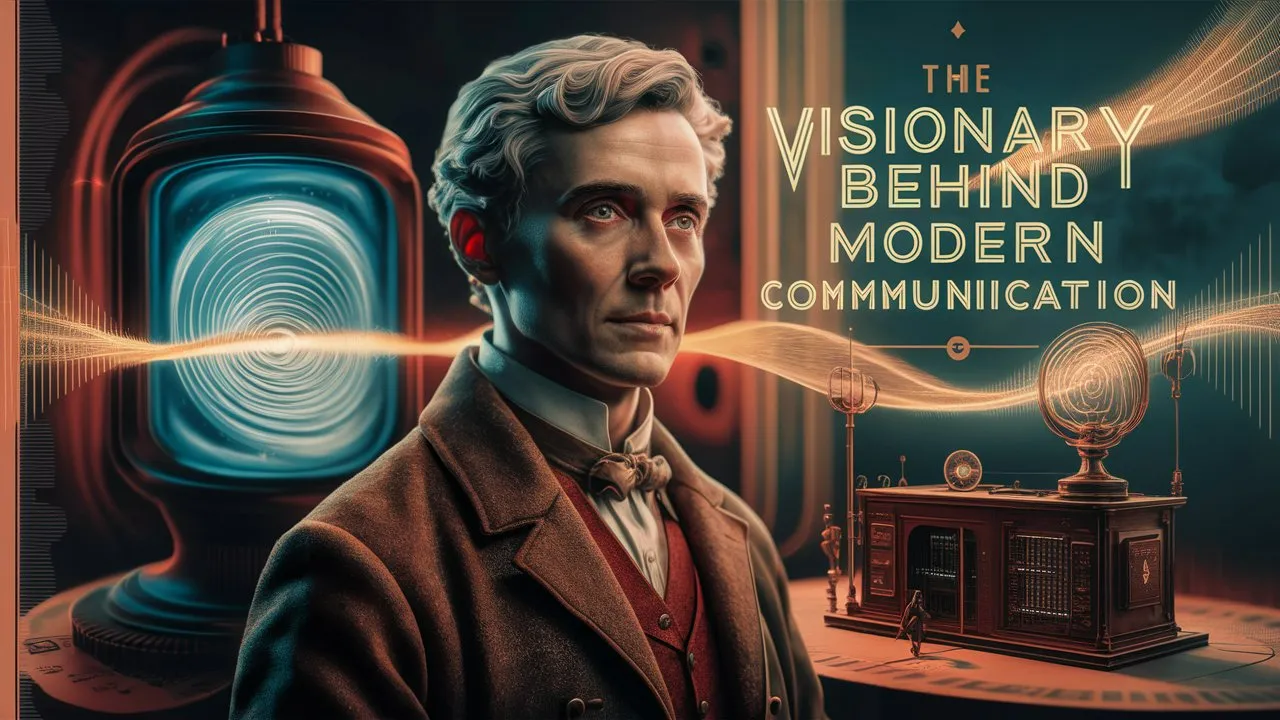
Karl Ferdinand Braun was born on June 6, 1850, in Fulda, Germany. From a young age, he exhibited a keen interest in the sciences, particularly physics and mathematics. His academic journey took him to several prestigious institutions, where his talents quickly became evident. Braun earned his doctorate in physics from the University of Berlin in 1872, under the supervision of the renowned physicist Hermann von Helmholtz. His early work focused on the electrical conductivity of metals and crystals, laying the foundation for his later groundbreaking contributions.
One of Braun's most significant contributions to science and technology was the invention of the cathode-ray tube (CRT) in 1897. The CRT was a groundbreaking device that would become the cornerstone of early television sets, oscilloscopes, and radar screens.
Braun's CRT was essentially a vacuum tube in which a beam of electrons was emitted from a cathode and directed towards a phosphorescent screen. When the electrons struck the screen, they produced visible light, creating images. This invention was revolutionary because it allowed for the visualization of electrical signals, providing a new way to observe and analyze electronic phenomena.
The CRT not only became the basis for the first television displays but also played a crucial role in the development of oscilloscopes, devices used to observe varying signal voltages. Oscilloscopes became indispensable tools in laboratories and industries, enabling scientists and engineers to visualize and analyze complex electrical waveforms with unprecedented accuracy.
In addition to his work on the CRT, Braun made significant contributions to the field of wireless telegraphy, which would later evolve into modern radio communication. At the time, wireless communication was in its infancy, and the primary method involved using spark-gap transmitters that emitted radio waves over long distances. However, these early systems were inefficient and prone to interference.
Braun's innovative approach to wireless telegraphy involved the use of tuned circuits and directional antennas to improve the transmission and reception of signals. By introducing inductance and capacitance into the circuit, he was able to create resonant circuits that could selectively tune into specific frequencies, reducing interference and improving the clarity of transmitted signals. This innovation was a significant step forward, enabling more reliable and efficient wireless communication.
Braun’s work in this area culminated in his sharing the Nobel Prize in Physics in 1909 with Guglielmo Marconi, the Italian inventor who is often credited with the invention of the radio. While Marconi focused on the practical applications of wireless telegraphy, it was Braun’s theoretical and technical innovations that made these applications feasible on a larger scale.
Karl Ferdinand Braun’s inventions and innovations had a profound impact on the development of modern communication technologies. The CRT, as the foundational technology for television and radar displays, remained in use for much of the 20th century until it was eventually supplanted by more modern display technologies like liquid crystal displays (LCDs) and light-emitting diodes (LEDs). However, without Braun’s pioneering work, the development of these subsequent technologies might have been delayed by decades.
Similarly, Braun’s advancements in wireless telegraphy laid the groundwork for the development of modern radio, television broadcasting, and even the wireless networks that power our smartphones and computers today. His work was crucial in transforming wireless communication from a novelty into a reliable, global means of transmitting information.
Karl Ferdinand Braun’s contributions to science and technology continue to resonate in our modern world. His pioneering work on the cathode-ray tube and wireless telegraphy not only revolutionized communication during his lifetime but also set the stage for the development of many technologies that we now take for granted. From the television screens that entertained generations to the wireless communication networks that connect the world, Braun’s legacy is all around us.
As we look to the future of communication and technology, it is essential to remember and celebrate the visionaries like Karl Ferdinand Braun, whose innovations have shaped the world we live in today. His work serves as a reminder of the power of scientific inquiry and the profound impact that one individual’s vision can have on the world.
FAQs
1. What is Karl Ferdinand Braun most famous for?
Karl Ferdinand Braun is most famous for his invention of the cathode-ray tube (CRT) and his advancements in wireless telegraphy, both of which had a significant impact on the development of modern communication technologies.
2. How did the cathode-ray tube (CRT) revolutionize communication?
The CRT allowed for the visualization of electrical signals, which was essential for the development of television displays and oscilloscopes. These technologies became fundamental to communication, entertainment, and scientific research.
3. What role did Braun play in the development of wireless telegraphy?
Braun introduced key innovations in wireless telegraphy, such as tuned circuits and directional antennas, which improved the efficiency and reliability of wireless communication. These advancements were crucial to the development of modern radio and television broadcasting.
4. Did Karl Ferdinand Braun win a Nobel Prize?
Yes, Karl Ferdinand Braun was awarded the Nobel Prize in Physics in 1909, which he shared with Guglielmo Marconi for their contributions to the development of wireless telegraphy.
5. What is the legacy of Karl Ferdinand Braun’s work?
Braun’s work laid the foundation for many modern communication technologies, including television, radio, and wireless networks. His innovations continue to influence the development of new technologies and systems in the field of communication.
To know more, watch our video : https://www.youtube.com/watch?v=LKz3JqxX2mM